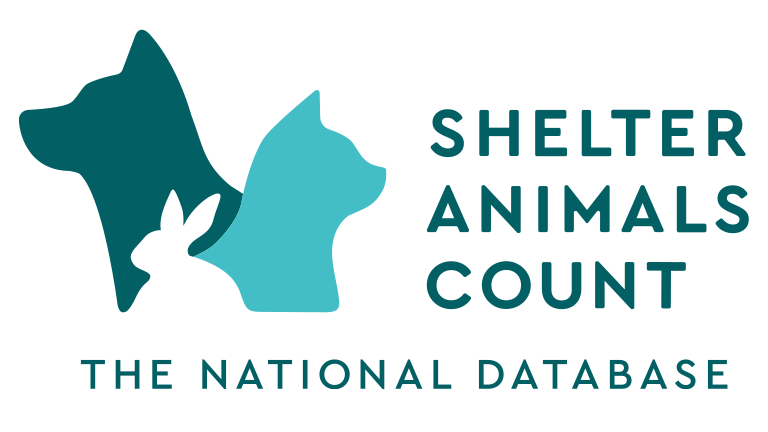Webinar Recap: Making Kittens Count – Kitten-Focused Data Insights and Opportunities
On May 28, 2025, Shelter Animals Count (SAC) hosted an insightful webinar titled Making Kittens Count, featuring renowned kitten advocate Hannah Shaw, also known as “The Kitten Lady.” This session, part of the Unlocking Animal Data series powered by Hill’s Pet Nutrition, delved into the significance of meticulous data collection for pre-adoption age kittens and its impact on improving outcomes for these vulnerable animals.
Throughout the webinar, Hannah pulled real data directly from SAC’s national database to illustrate both progress and persistent challenges. She highlighted:
+ A significant spike in kitten intake during spring and summer months — reinforcing the need for seasonal planning.
+ The lack of standardized tracking for underage kittens in many shelters, particularly when kittens are grouped with adults or lumped together without age-specific outcomes.
+ An increase in “intake with no outcome” records for kittens, suggesting that some shelters may not be fully documenting what happens to this age group.
Key Takeaways
+ Kitten Data is Critical: Hannah Shaw opened the session by underscoring the fact that kittens — particularly neonatal kittens — remain one of the most vulnerable population in animal shelters. They’re also often the least tracked with precision. She stressed that if we’re not counting kittens correctly, we’re not saving them effectively.
+ The Importance of Detailed Kitten Data: Accurate and comprehensive data on kittens is essential. By tracking specifics such as intake age, health status, and outcomes, shelters can identify trends, allocate resources effectively, and implement targeted interventions to enhance kitten survival rates.
+ Challenges in Tracking Kitten Data: Shelters often face obstacles in collecting detailed kitten data, including limited staffing, inconsistent reporting standards, and inadequate data management systems. Addressing these challenges is crucial for obtaining actionable insights.
+ Strategies for Improved Data Collection: Implementing standardized data entry protocols, investing in staff training, and utilizing user-friendly data management tools can significantly enhance the quality and consistency of kitten data collected by shelters.
+ Leveraging Data for Lifesaving Outcomes: Analyzing comprehensive kitten data enables shelters to identify high-risk periods, optimize foster care placements, and develop community outreach programs aimed at reducing kitten mortality and increasing adoption rates.
Strategies for Better Kitten Data Collection
Hannah offered practical, shelter-friendly advice on how organizations can improve their kitten data:
+ Break down data by age and weight, not just species or intake type.
+ Make use of SAC’s standardized data definitions to ensure consistency across reporting.
+ Use intake data as a forecasting tool — knowing when kitten season peaks in your region can drive better foster recruitment, staffing, and supply planning.
+ Integrate outcome tracking with medical status and age — understanding which kittens are at highest risk allows for proactive intervention.
+ Sign up for SAC’s automatic data transfers through our APIS
The Role of Shelter Animals Count
SAC plays a critical role in analyzing data from shelters and rescues nationwide, and it’s thanks to our animal-level data that we’re able to highlight what is happening with kittens. By contributing data to SAC, organizations can benchmark their performance, identify areas for improvement, and collaborate on strategies to enhance kitten welfare on a broader scale.
Watch the Webinar
Up Next in the Unlocking Animal Data Series:
Webinar: Mobilizing Foster Care: Unlocking the Power of Community-Based Support
📅 Wednesday, June 18 at 2:00 PM ET
Part of the Unlocking Animal Data Series presented by Shelter Animals Count and Hill’s Pet Nutrition
Join us for a focused look at how foster programs are evolving to meet today’s challenges through innovative, community-driven strategies. We’ll highlight short-term fostering initiatives like Arizona Humane Society’s successful Dog Day Out program, showcasing the data they’re collecting, how it’s driving engagement, and the positive impact on long-stay dogs.
With hurricane season underway, you’ll also hear from Brother Wolf Animal Rescue on how they rallied their community to foster every pet ahead of Hurricane Helene, and how they managed operations and pet tracking through the aftermath.
This session will also include foster-related insights from SAC’s 2024 Year-End Report and Hill’s State of the Shelter Report, helping you put national trends into local action.
This webinar will be recorded.
